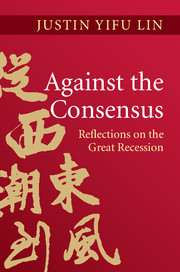Book contents
- Frontmatter
- Contents
- List of figures
- List of tables
- List of boxes
- Preface
- Overview
- Part I What Caused the 2008–9 Global Crisis?
- Part II A Win-Win Path to Recovery
- Part III How Poor Countries Can Catch Up: Flying Geese and Leading Dragons
- Part IV Toward a Brave New World Monetary System
- 12 The evolution of the international monetary system
- 13 Emerging pressures and policy challenges
- 14 (In)stability of the emerging multiple reserve currency system
- 15 The thinking behind the main reform proposals
- 16 Costs and benefits of major reform proposals
- 17 A proposal for a new global reserve currency: paper gold (“p-gold”)
- 18 Why it still matters
- References
- Index
15 - The thinking behind the main reform proposals
from Part IV - Toward a Brave New World Monetary System
Published online by Cambridge University Press: 05 June 2013
- Frontmatter
- Contents
- List of figures
- List of tables
- List of boxes
- Preface
- Overview
- Part I What Caused the 2008–9 Global Crisis?
- Part II A Win-Win Path to Recovery
- Part III How Poor Countries Can Catch Up: Flying Geese and Leading Dragons
- Part IV Toward a Brave New World Monetary System
- 12 The evolution of the international monetary system
- 13 Emerging pressures and policy challenges
- 14 (In)stability of the emerging multiple reserve currency system
- 15 The thinking behind the main reform proposals
- 16 Costs and benefits of major reform proposals
- 17 A proposal for a new global reserve currency: paper gold (“p-gold”)
- 18 Why it still matters
- References
- Index
Summary
As international economic and financial integration deepened in the decades following the Bretton Woods conference, the international monetary system changed. Calls for more radical reform have intensified since the global financial crisis of 2008–9. In evaluating various reform proposals, it is important to keep in mind how the international monetary system differs from national systems. Some of its functions resemble those of a national monetary authority: a payment system, acting as lender of last resort, and provider of liquidity as part of overall management of the global money supply. But these roles are more limited at the international level, because of the constraints of national sovereignty and the absence of an international government. This implies that the international monetary system must always operate by consensus. The coordination of monetary policy and exchange rate regimes would thus be an additional function at the international level.
The international payments system
The payments system of the international monetary system is anchored by the Bank for International Settlements, which settles foreign exchange and gold transactions between member central banks. The BIS also provides money market instruments: sight and fixed-term deposits and tradable instruments denominated in a variety of major currencies and Special Drawing Rights. The BIS handles these functions well, and there are no major reform proposals currently on the table.
- Type
- Chapter
- Information
- Against the ConsensusReflections on the Great Recession, pp. 182 - 190Publisher: Cambridge University PressPrint publication year: 2013



